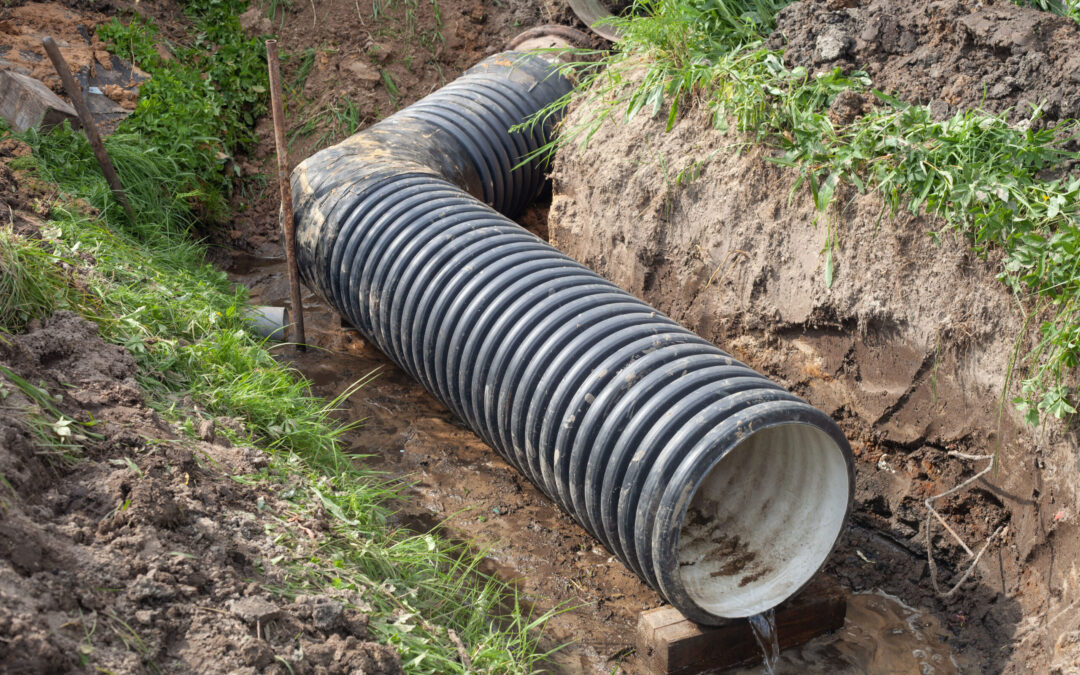Water intrusion is one of the most common challenges for basements in New York homes. Whether you live in Long Island, Brooklyn, Queens, or the Bronx, heavy rain, high groundwater levels, and aging foundations often lead to moisture problems that can damage your home. One of the most effective and time-tested solutions for managing basement water is the use of weeping tiles.
In this blog, we’ll explain what weeping tiles are, how they work, the difference between interior and exterior systems, and whether they are the right solution for your home.
What Are Weeping Tiles?
Despite the name, weeping tiles are not tiles at all. Historically, they were made of clay pipes, but modern versions are made of perforated PVC or plastic. These pipes are installed at the base of a home’s foundation and are designed to “weep” in water through small holes or slits. Once the water enters the pipe, it’s carried away from the foundation to a safe discharge point, such as:
- A sump pump basin (inside the basement)
- A storm sewer system (where permitted)
- A drainage field away from the home
The goal is simple: prevent water from pooling around your foundation and forcing its way into the basement.
How Do Weeping Tiles Work?
Water naturally seeks the lowest point. During heavy rains or snowmelt, groundwater collects around a home’s foundation. If this water is not redirected, it builds up pressure—known as hydrostatic pressure—that pushes moisture through cracks, joints, and even porous concrete walls.
A weeping tile system is installed at the footing level (the lowest point of your foundation). The perforated pipe collects this excess water and redirects it away before it can cause damage. In many cases, the system connects to a sump pump, which actively pumps the water out of your basement.
When Are Weeping Tiles Used?
Weeping tiles are an effective drainage solution, but they’re not needed in every situation.
They’re most commonly installed under the following conditions:
- High groundwater levels: To protect basements from flooding and seepage.
- Poor soil drainage (like clay): Where water tends to sit around foundations instead of draining naturally.
- Foundation waterproofing projects: To channel water safely away from basement walls.
- New home construction: Installed as part of a preventative waterproofing system.
- Heavy rainfall or snowmelt areas: To manage large amounts of excess surface and subsurface water.
- Older homes with water issues: Used to retrofit drainage when existing systems fail.
In short, weeping tiles are best for properties with persistent water buildup around foundations or in areas where soil does not drain properly.
Types of Weeping Tile Systems
There are two main types of weeping tile systems: exterior and interior. Both have advantages depending on your home’s condition and budget.
1. Exterior Weeping Tiles
- Installed around the outside perimeter of your foundation.
- Requires excavation down to the footing level.
- The perforated pipe is surrounded by gravel and often wrapped in filter fabric to prevent clogging.
- Water is directed to storm sewers or drainage fields.
Benefits:
- Stops water before it reaches your basement walls.
- Provides long-term, comprehensive protection.
Drawbacks:
- More expensive due to excavation.
- Disruptive to landscaping, driveways, and patios.
2. Interior Weeping Tiles
- Installed along the inside perimeter of your basement floor.
- Requires breaking the concrete slab at the edges to install the pipe.
- Water is collected beneath the floor and directed into a sump pump system.
Benefits:
- Less expensive than exterior systems.
- No need for exterior excavation, making it practical in crowded neighborhoods like Brooklyn or Queens.
- Can be installed in finished homes without disturbing landscaping.
Drawbacks:
- Does not stop water from reaching foundation walls—only manages it once it enters.
Signs You May Need Weeping Tiles
Wondering if your basement could benefit from a weeping tile system? Look for these common signs of water intrusion:
- Persistent basement leaks after rainstorms.
- Water pooling around the foundation outside.
- White, chalky residue (efflorescence) on basement walls.
- Mold or mildew growth on walls or floors.
- Cracks in the foundation allowing water seepage.
- Musty odors in the basement, indicating ongoing moisture issues.
If you notice any of these warning signs in your Long Island, Queens, Bronx, or Brooklyn home, it may be time to consult a waterproofing contractor about installing weeping tiles.
Weeping Tiles vs. French Drains
Many homeowners wonder about the difference between weeping tiles and French drains. In truth, they are very similar systems, both using perforated pipes to collect and redirect water.
- Weeping tiles are usually installed at the footing of a foundation, specifically for basement waterproofing.
- French drains can be installed at various depths—inside basements, outside foundations, or even in yards to manage surface water.
In New York homes, both systems are highly effective, but weeping tiles are the go-to solution for protecting foundations from groundwater pressure.
Cost of Weeping Tile Installation
The cost of installing weeping tiles depends on whether you choose an interior or exterior system:
- Interior weeping tiles: $5,000 – $15,000 (including sump pump installation).
- Exterior weeping tiles: $8,000 – $25,000+, depending on excavation complexity and property size.
While the investment may seem high, ignoring basement water issues often leads to far more expensive repairs—such as structural foundation damage or full-scale mold remediation.
Why Choose Zavza Seal for Weeping Tile Installation?
At Zavza Seal, we understand the unique waterproofing challenges faced by homeowners in Long Island, Brooklyn, Queens, and the Bronx. Our team specializes in both interior and exterior weeping tile systems, ensuring your basement stays dry year-round.
Here’s why homeowners trust us:
- Expert inspections to determine the right waterproofing system for your property.
- Customized solutions based on your home’s age, soil conditions, and water issues.
- Professional installation using modern materials and proven techniques.
- Warranty-backed work, giving you peace of mind.
- Local experience—we know the challenges New York homeowners face with groundwater and heavy rainfall.
Final Thoughts
If your basement is damp, leaky, or showing signs of water damage, it’s time to consider weeping tiles as a solution. Whether you need exterior weeping tiles for maximum protection or an interior weeping tile system for a cost-effective fix, Zavza Seal has the expertise to deliver lasting results.
Don’t wait until water damage leads to expensive repairs. Contact Zavza Seal today for a consultation and discover how we can protect your Long Island, Brooklyn, Queens, or Bronx home with reliable waterproofing solutions.
A dry basement isn’t just about comfort: it’s about protecting the safety, value, and longevity of your property.








